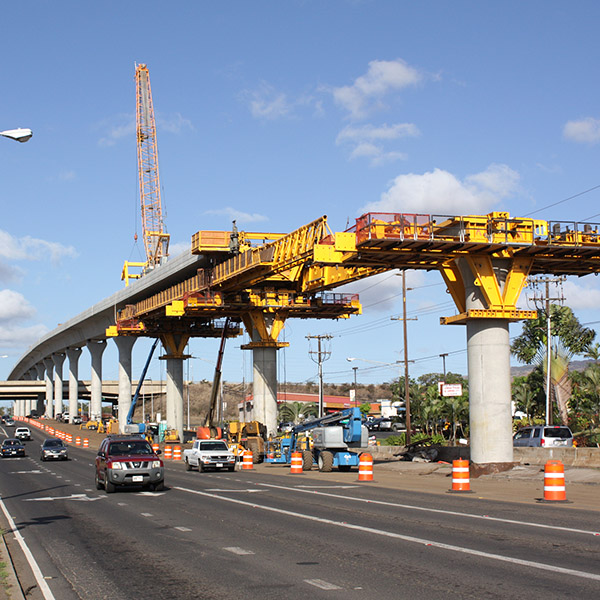California needs another 1.1 million electric vehicle chargers in public areas to meet its transportation decarbonization goals, but the process for building EV charging facilities is slow and expensive compared with other states, making reaching the goal more difficult, developers said in a workshop last week.
The joint meeting of the California Energy Commission (CEC), the California Public Utilities Commission (CPUC) and the Governor’s Office of Business and Economic Development addressed the need to greatly accelerate the growth of EV charging infrastructure in the next eight years.
The state requires nearly 1.2 million public EV chargers by 2030 to support light-duty EVs and meet its greenhouse gas (GHG) reduction goal and clean energy mandate, the CEC estimates. But only 75,000 chargers are installed in shared, public locations, it said.
“We need a massive scale-up,” CEC Commissioner Patricia Monahan said, adding that “bottom line, we need to move quickly to [build] zero emission vehicle infrastructure.”
Without adequate charging infrastructure, the state will have trouble meeting the goal set by former Gov. Jerry Brown of having 5 million EVs on the road by 2030, and Gov. Gavin Newsom’s executive order that all new passenger vehicles sold in-state must be emission-free by 2035. (See Can California Meet Its EV Mandates? and California Needs Huge Number of EV Chargers.)
Under Senate Bill 100, signed by Brown in 2018, utilities must provide retail customers with 60% renewable energy by 2030 and 100% zero-emissions energy by 2045. The state’s legislatively mandated GHG targets include reducing emissions 40% below 1990 levels by 2030.
Developers said for adequate charging infrastructure to be built, the process of getting new charging sites approved by local planning authorities and connected by utilities needs to speed up.
“In California, a new-service utility interconnection takes an average of 39 weeks or nine months to complete, in our experience, having built more than 200 stations today,” said Matthew Nelson, director of government affairs for Electrify America, the largest network of fast-charging stations in the U.S.
“The utility process for constructing the interconnection, the line extension and dropping the transformer … takes an average of 27 weeks, or more than six months, to complete,” Nelson said. “As a result, building stations in California costs 34% more for the exact same station than it costs us to build the same station in any other states.”
The state has invested vast sums toward charging infrastructure in its effort to reduce emissions and electrify the transportation sector, which is responsible for 40% of GHGs in California, with passenger vehicles accounting for about three-quarters of the total.
The most recent state budget allocated $1.2 billion over three years to promote consumer adoption of ZEVs, including $300 million to close the projected gap through 2025 in light-duty charging and fueling infrastructure. (See Calif. Earmarks $3.9B for ZEVs Through 2024.)
The CPUC and CEC have approved large sums to develop and accelerate charging infrastructure. The CPUC authorized the state’s investor-owned utilities to recover $1.85 billion in costs related to EV charging efforts. And the CEC has provided grants of $100 million per year since 2008 for zero-emission vehicle charging and fueling through its Clean Transportation Program.
Disadvantaged Communities
Installing charging sites in low-income communities and apartment complexes so that EV adoption spreads beyond wealthier residents has been a significant part of those efforts.
“As we increasingly broaden deployment to all segments of society — which we can do, and which we must do — getting infrastructure in place is critical,” CEC Commissioner Clifford Rechtschaffen said.
“We’ve prioritized having equitable access to transportation electrification by directing very significant portions of utility investment to disadvantaged communities,” Rechtschaffen said. “That has a great benefit of reducing pollution burden in those areas that need it the most, and we’ve also focused on underserved areas of the market, where the private sector hasn’t stepped in and where we need ratepayer-funded utility investment.”
Installing chargers in disadvantaged communities has proven slow and frustrating, said Paul Francis, CEO of charging manufacturer and software developer Keep it Green Tech. The company has worked with churches in South Los Angeles and other areas to install fast chargers in their large parking lots for use by parishioners and neighbors.
“What we’re noticing in frontline communities are that tier 3 level [fast-charging] projects — you’re looking at 1,500 kW or more — are a lot more challenging and a lot more stringent when you’re talking about the permitting and interconnection process, and interconnection has a lot to do with the permitting process for us,” Francis said.
“For example, it’s taken almost two years to get someone to come out to one site just to check if a pole can be put in place where there’s no power,” he said. “And see, often what’s happened in the past is these communities, these frontline communities, their local grid was never designed for uptake of this type of power capacity. And even though some aren’t affluent areas … a community sense of urgency pushes [for EV charging].”
Rebates and incentives could help, but often by the time we “finally get someone to come check out if we can do it,” the rebate funds have been exhausted, he said. The state needs to set aside funds specifically for fast-charging projects in underserved communities “so that they can participate in the future as well,” Francis said.


